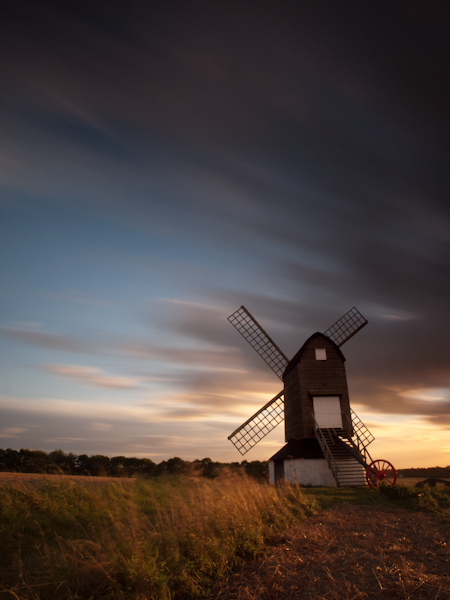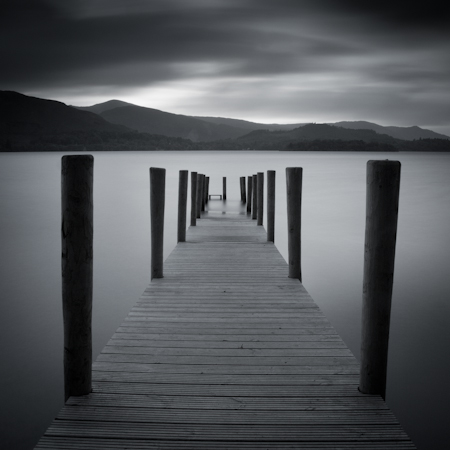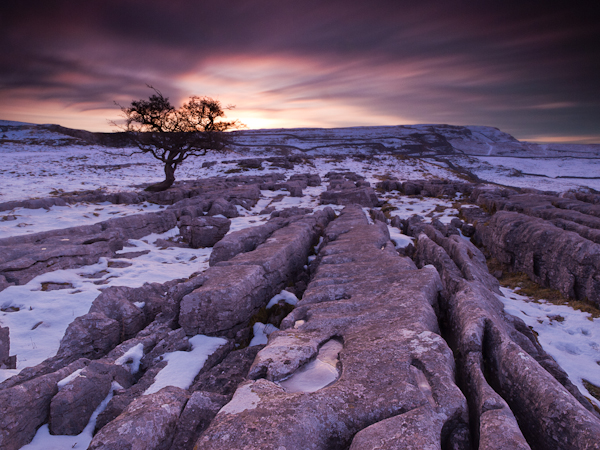8 Tips for Long Exposure Photography
via Digital Photography School by Guest Contributor on 9/25/12

Pitstone Windmill at sunset (ISO100, f/18, 118 s)
Long exposure photography has become very popular in the last couple of years, getting a lot of coverage in landscape photography magazines and on photo sharing websites. With the ever-increasing number of options for 10-stop neutral density (ND) filters on the market, there has never been a better time to give it a go.
However, taking photographs when using such high-density filters gives rise to a set of problems that you may not have previously considered, so this article is intended to give a few useful tips that I have picked up since starting my journey learning about long exposure photography.
First, a bit of Background…
A neutral density filter should be just that: neutral; blocking out light without leaving a colour cast on the resulting image. Each 'stop' of an ND filter reduces the amount of light entering the camera by a factor of 2, i.e.:- 1 stop = 21 = 2 = ND2
- 2 stops = 22 = 2 x 2 = 4 = ND4
- 3 stops = 23 = 2 x 2 x 2 = 8 = ND8
- 4 stops = 24 = 2 x 2 x 2 x 2 = 16 = ND16
- 10 stops = 210 = 2 x 2 x 2 x 2 x 2 x 2 x 2 x 2 x 2 x 2 = 1024 = ND1024
Whilst this is the reason that you get silky smooth water or clouds rushing across the sky, it is also the reason why your workflow will need to be adapted to overcome issues as a result of the huge reduction in light.

Derwent Water, Lake District, UK (ISO100, f/16, 67 s)
On to the Tips…
Tip 1: Whilst a tripod is considered a baseline requirement for many landscape photographers, it is even more important when shooting with a 10-stop filter. Exposures can easily extend to greater than a couple of minutes, so it is vital that your tripod is as sturdy as can be. This typically means ensuring that the legs are stood on firm ground, the centre column is not extended and the strap is secured so not to catch the wind.You will often read that people recommend hanging your camera bag from the tripod to add ballast weight, however I think that it can often act as a large sail and cause greater instability if windy, so I instead tend to place a beanbag (full of uncooked rice) on top of the camera to add extra weight, without significant additional surface area.
Tip 2: Given that the filter is incredibly dense, unless the conditions are really bright, there will not be enough light getting through to allow the autofocus to function. Therefore, it is best to compose and focus your shot without the filter, switch to manual focus and then carefully attach the filter. This way the lens will not hunt for focus when you press the shutter.
Tip 3: It is important to close the viewfinder shutter, or at least cover the viewfinder, to ensure accurate light metering (if shooting in an automatic exposure mode, such as aperture priority) and to prevent stray light from sneaking in during the exposure. I'm not sure how critical the second point is but given how much the auto-metering is affected by the open viewfinder, I no longer take the chance so ensure it is closed before taking my shot.
Tip 4: For exposures in excess of 60 seconds, you'll need to be able to locate the 'BULB' mode of your camera. Switching to BULB enables you to open the shutter for as long as you choose, enabling really long exposures, meaning:
- You will most likely need a remote shutter release cable so that you can lock the shutter open for a given period of time (it's a good idea to attach the remote release to the tripod using Velcro during the exposure, again to stop it from catching the wind and swinging around).
- You will most likely need a way of calculating how long to leave the shutter open for. In some cases, the maths is trivial (for example, if an exposure without the filter is ¼ s, when using a 10-stop filter it becomes 0.25 s x ~1000 = 250 s, 250 s / 60 = ~4 minutes) but in others it can be more difficult, and as the light conditions can change pretty quickly, a phone app (such as NDCalc for android/iOS) can come in very handy.

Sunrise over the limestone pavement (ISO160, f/13, 50 s)
An effective way to remove them is to take an exposure of identical length, at the same ISO, with the lens cap on. The hot pixels will be identical in all shots, almost like a finger print of your sensor, so by replicating the exposure with the lens cap on, you will generate an entirely black image, with the same hot pixels, to subtract away from your chosen image during post-processing.
Tip 7: Some brands of filter are known to leave more of a colour cast on the final image. This is a great reason (one of many) to shoot in RAW, as the colour casts can often be corrected during post-processing. Sometimes, for particularly long exposures, it may just irreversibly compromise an image and, in those instances, a black and white conversion is often the best way to overcome it.
Tip 8: A long exposure does not make up for poor composition. In fact, the you will probably be even more frustrated at the resulting photograph given the additional effort required to take and process it.
To Conclude…
Whilst I have discussed quite a few additional points to consider when taking long exposures with high-density ND filters, you soon learn to adapt them into your own work pattern that becomes routine. I find that taking long exposures often requires more planning, thought and processing than with my other photography, however the results can be breathtaking and are often worth it.If you have any additional tips or issues that I haven't mentioned here, I'd love to hear them in the comments.
Elliot Hook is a wildlife and landscape photographer based in Hertfordshire, UK. He tries to learn as much as he can to help improve his photography and enjoys sharing what he has learnt with others.
Elliot can be found at www.elliothook.co.uk, on Twitter, Flickr and 500px.
Post originally from: Digital Photography Tips.
Check out our more Photography Tips at Photography Tips for Beginners, Portrait Photography Tips and Wedding Photography Tips.
8 Tips for Long Exposure Photography
source by : DigitalPhotographySchool
Post Title :
8 Tips for Long Exposure Photography



























0 comments
Post a Comment